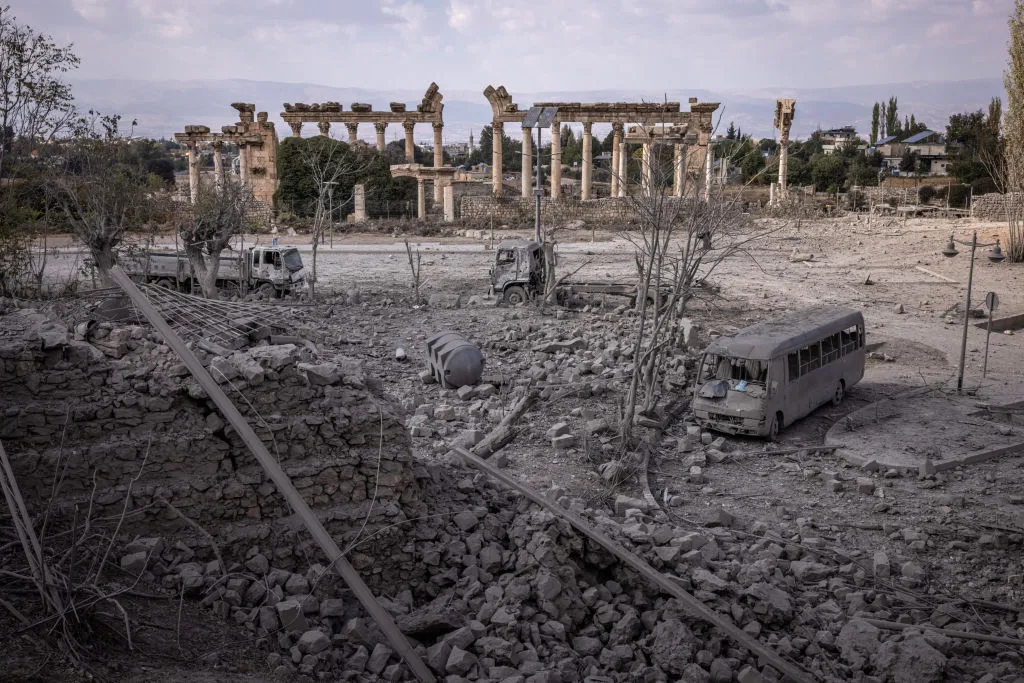
UNESCO’s Special Committee for the Protection of Cultural Property will hold an emergency session on November 18 dedicated to heritage sites in Lebanon as Israel intensifies its bombing of Baalbek, a historic city in eastern Lebanon home to one of the world’s best-preserved Roman ruins.
Lebanon’s U.N. ambassador, Moustapha Adib, told the Beirut-based newspaper L’Orient Today that he, along with the director general of antiquities, Sarkis Khoury, will represent Lebanon’s culture of ministry at the meeting. Lebanon’s culture minister, Mohammed Al-Murtada, will be represented at the meeting by Moustapha Adib, Lebanon’s ambassador to the UN, and the director general of antiquities, Sarkis Khoury.
In recent weeks, Lebanese authorities have appealed for international intervention on behalf of the triad of Roman temples in Baalbek, as well as other historic sites in the Bekaa valley that could be imperiled by Israel’s military campaign against Hezbollah. Israel’s air strikes escalated on September 27 when hundreds of pagers allegedly used by the group’s members were remotely detonated across Lebanon.
As of November 7, in Baalbek and its surrounding towns and villages affected by Israeli airstrikes, at least 40 people have been killed and more than 50 have been wounded. Israel, claiming to have identified Hezbollah command centers, issued evacuation orders to civilians in the area; some 50,000 have since fled the threat.
Earlier this month, images shared widely on social media seemed to show a plume of smoke rising behind the columns of a temple in Baalbek after an Israeli air strike landed less than a mile away. The 11,000-year-old triad of temples devoted to the Roman deities of Jupiter, Venus, and Mercury has been listed as a UNESCO World Heritage Site since 1984.
Joanne Bajjaly, archaeologist and leader of the Lebanese NGO Biladi, told the Art Newspaper that other historic sites in Lebanon have been impacted by the war. In Baalbek, one of the stones comprising the “Qube” (or “dome”) of the 1243 CE Qubbat Doris, a Muslim shrine, had broken off, though the structure itself is still standing. Two adjoining city walls in the historic old town, one of which dates to the French Mandate, and the other constructed in the Ottoman era, have suffered severe damage from Israeli air strikes.
“What we do not know yet is the level of impact from the continuous seismic movements and vibrations on the monuments due to the bombings,” Bajjaly said. “This damage is unforeseen. At present no one can go to assess the damage due to the war or measure the strength of the vibration on the soil. There’s also the damage of the continuous pollution of the air and the chemicals that are in the air. No one will know how they will affect the stones in the monuments.”
Additionally, the Tayr Debba Mosque, Kfar Tebnit Mosque, the Dardghaya Church, and the Blida Mosque—all ancient religious landmarks designated as heritage buildings—have been affected by the war. The Tebnin Castle, a Crusader castle east of the Lebanese city of Tyre, was directly struck by the Israeli military.
Speaking to L’Orient Today, Adib added that Lebanon’s Permanent Delegation to UNESCO had stressed the urgency of the situation to the organization’s Director General, Audrey Azoulay, and asked him to publicly “call for greater protection of natural and archaeological sites.”
Asked what that means for heritage sites in a practical sense, Adib said: “That the intention organizations can help restore damaged heritage, and above all that Israel be held accountable for its crimes against heritage.”

